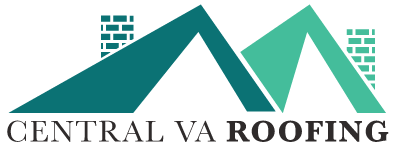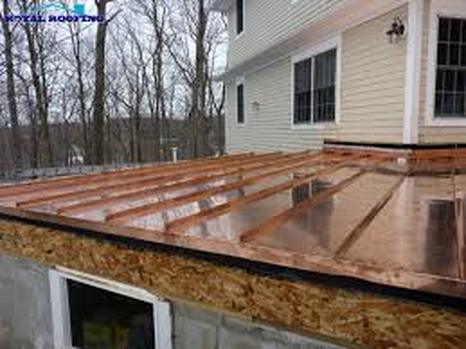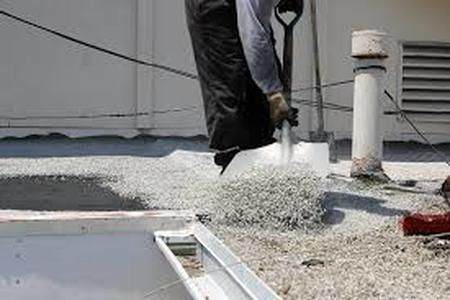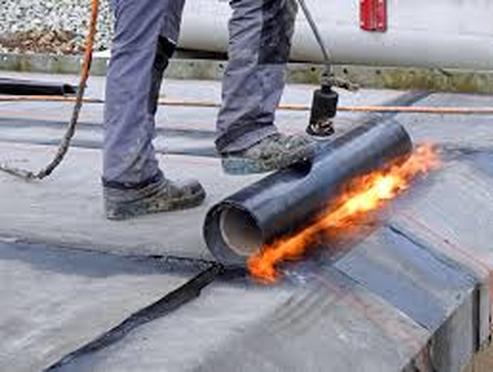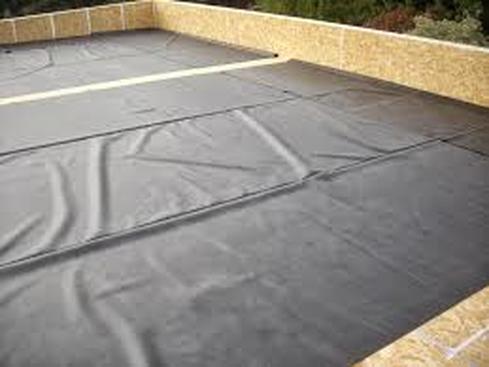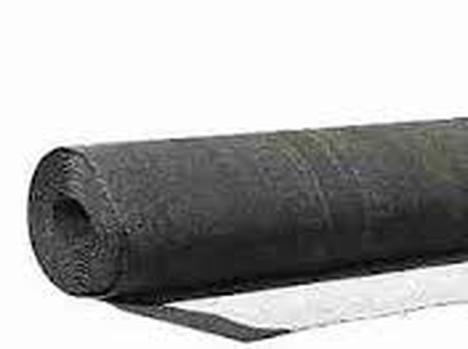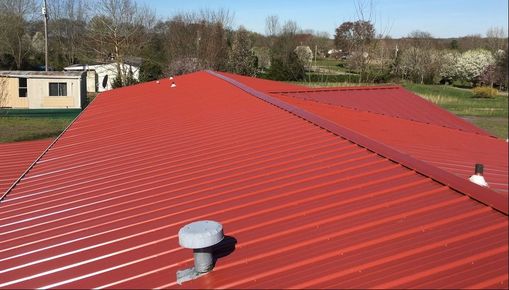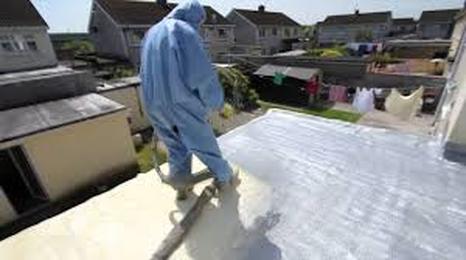CENTRAL VA ROOFING
434-885-0528
Click to call for a free quote!
We service all types of flat roofs in Central Virginia.
Types of Roofing for Flat or Low-Pitched Roofs
Flat roofs are used on residential homes in areas with slight rainfall or snow or on commercial buildings with large roof spans. Flat Roofs are kind of a misnomer they do have an almost imperceptible slope- water does need to drain though it doesn't happen fast on these roofs. Low-Pitched Roofs are sometimes used in high snow areas; however, the roof's framing should be designed for extra weight. Practicality in design should not position doors, entrances and walkways under the eaves where the snow will eventually come down.
Tar & Gravel or BTU (built up roof): Alternating layers (3 to 5) of heavy roofing felt and hot asphalt or tar are built up on the roof and finish with a top coat of gravel or mica to protect the roof from storm or foot traffic damage, and to reflect the UV rays of the sun. These roofs are rated by how many layers are installed.
Modified Bitumen: The same process for the built-up roof with additional layer of polyester or fiberglass impregnated with bitumen (a black viscous mixture obtained naturally or a petroleum distillation residue). This roof is stronger and more resistant to weather than the BTU roof.
EPDM RUBBER: Ethylene Propylene Diene Monomer is used to create a single-ply rubberized roofing membrane. EDPM is sold in a range of widths 7.5 to 50 feet, and in 2 thickness, 45 and 60 mils. It can be installed as a complete membrane or ballasted with seams that are connected with liquid adhesives or specially formulated tape. These roofs do require expert installation so the membrane will seal properly- most novice installers have difficulty sealing seams and making the membrane smooth and tight.
Roll: A roll is a low-cost 90-pound felt roofing material used for sheds or as an inexpensive roof. One roll of this roofing material covers 100 sq. feet and weighs 90 lbs.- hence its moniker. It does have a mineralized surface made from the same material as asphalt shingles to help waterproof the roof. Although, its life expectancy is 10 years or less because it is only a one layer deep membrane.
Metal: These roofs come in shingles or panels, and can be manufactured to appear many different ways. They have a life expectancy of over 30 years and are very fire resistant, but are costlier to install. These roofs have to be well insulated because metal is a such a good heat conductor it may radiate heat into areas below reducing the energy efficiency of the building.
SPF has been used for over 50 years as a roofing and insulating material. Presently there are foam roofs that have been in place for decades, and can be expected to last indefinitely as long as they are maintained. A SPF roof is a 2-layer system:
- The bottom layer is the polyurethane foam.
- The top layer is a coating of elastomeric silicone or acrylic coating with embedded granules which is needed to protect against the sun’s UV rays, and it also strengthens the surface against damage from various sources.
